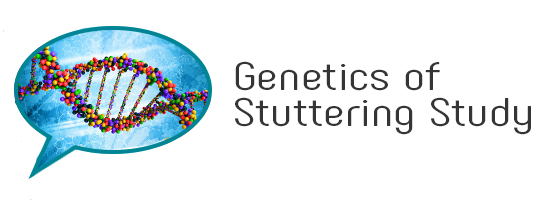References
References:
- Teesson K, Packman A, Onslow M. The Lidcombe behavioral data language of stuttering. J Speech Lang Hear Res. 2003;46:1009-15.
- Reilly S, Onslow M, Packman A, et al. Predicting stuttering onset by the age of 3 years: a prospective, community cohort study. Pediatrics. 2009;123:270-7.
- Gordon N. Stuttering: incidence and causes. Dev Med Child Neurol. 2002;44:
- Reilly S, Onslow M, Packman A, et al. Natural history of stuttering to 4 years of age: a prospective community-based study. Pediatrics. 2013;132:460-7.
- Kefalianos E, Onslow M, Packman A, et al. The History of Stuttering by 7 Years of Age: Follow-Up of a Prospective Community Cohort. J Speech Lang Hear Res. 2017;60:2828-39.
- Dworzynski K, Remington A, Rijsdijk Fh, et al. Genetic Etiology in Cases of Recovered and Persistent Stuttering in an Unselected, Longitudinal Sample of Young Twins. Am J Speech Lang Pathol. 2007;16:169-78.
- Craig A, Blumgart E, Tran Y. The impact of stuttering on the quality of life in adults who stutter. J Fluency Disord. 2009;34:61-71.
- Iverach L, Rapee RM. Social anxiety disorder and stuttering: current status and future directions. J Fluency Disord. 2014;40:69-82.
- Langevin M, Packman A, Onslow M. Peer responses to stuttering in the preschool setting. Am J Speech Lang Pathol. 2009`;18:264-76.
- Smith KA, Iverach L, O'Brian S, et al. Anxiety in 11-Year-Old Children Who Stutter: Findings From a Prospective Longitudinal Community Sample. J Speech Lang Hear Res. 2017;60:1211-22.
- Baxter S, Johnson M, Blank L, et al. The state of the art in non-pharmacological interventions for developmental stuttering. Part 1: a systematic review of effectiveness. Int J Lang Commun Disord. 2015;50:676-718.
- Jones M, Onslow M, Packman A, et al. Randomised controlled trial of the Lidcombe programme of early stuttering intervention. BMJ. 2005;331:659.
- Miller B, Guitar B. Long-term outcomes of the Lidcombe Program for Early Stuttering Intervention. Am J Speech Lang Pathol. 2009;18:42-9.
- Lewis C, Packman A, Onslow M, et al. A phase II trial of telehealth delivery of the Lidcombe Program of Early Stuttering Intervention. Am J Speech Lang Pathol. 2008;17:139-49.
- Block S, Onslow M, Packman A, et al. Connecting stuttering management and measurement: IV. Predictors of outcome for a behavioural treatment for stuttering. Int J Lang Commun Disord. 2006;41:395-406.
- The McGuire Programme McGuire ANZ 2019 [Available from: https://www.mcguireprogramme.com/en/au.]
- Chang SE, Garnett EO, Etchell A & Chow HM. Functional and neuroanatomical bases of developmental stuttering: current insights. The Neuroscientist. 2018;1-17. [ePub ahead of print]
- Chang SE, Erickson KI, Ambrose NG, Hasegawa-Johnson MA, Ludlow CL. 2008. Brain anatomy differences in childhood stuttering. Neuroimage. 39:1333–44.
- Cykowski MD, Fox PT, Ingham RJ, Ingham JC, Robin DA. 2010. A study of the reproducibility and etiology of diffusion anisotropy differences in developmental stuttering: a potential role for impaired myelination. Neuroimage. 52:1495–504.
- Sommer M, Koch MA, Paulus W, Weiller C, Büchel C. 2002. Disconnection of speech-relevant brain areas in persistent developmental stuttering. Lancet. 360:380–3.
- Watkins KE, Smith SM, Davis S, Howell P. 2008. Structural and functional abnormalities of the motor system in developmental stuttering. Brain. 131:50–9.
- Belyk M, Kraft SJ, Brown S. 2017. Stuttering as a trait or a state revisited: motor system involvement in persistent developmental stuttering. Eur J Neurosci. 45:622–4.
- Vanhoutte S, Santens P, Cosyns M, van Mierlo P. 2015. Increased motor preparation activity during fluent single word production in DS: a correlate for stuttering frequency and severity. Neuropsychologia. 75:1–10.
- Chang SE, Zhu DC. 2013. Neural network connectivity differences in children who stutter. Brain. 136:3709–26.
- Lu C, Peng D, Chen C, Ning N, Ding G, Li K, and others. 2010. Altered effective connectivity and anomalous anatomy in the basal ganglia-thalamocortical circuit of stuttering speakers. Cortex. 46:49–67.
- Wieland EA, McAuley JD, Dilley LC, Chang SE. 2015. Evidence for a rhythm perception deficit in children who stutter. Brain Lang. 144:26–34.
- Neef NE, Anwander A, Friederici AD. 2015a. The neurobiological grounding of persistent stuttering: from structure to function. Curr Neurol Neurosci Rep. 15:579.
- Andrews, G., A. Morris‐Yates, P. Howie, and N. G. Martin. 1991. Genetic factors in stuttering confirmed. Arch. Gen. Psychiatry 48:1034–1035.
- Felsenfeld, S., K. M. Kirk, G. Zhu, D. J. Statham, M. C. Neale, and N. G. Martin. 2000. A study of the genetic and environmental etiology of stuttering in a selected twin sample. Behav. Genet. 30:359–366.
- Ooki, S. 2005. Genetic and environmental influences on stuttering and tics in Japanese twin children. Twin. Res. Hum. Genet. 8:69–75.
- Dworzynski, K., A. Remington, F. Rijsdijk, P. Howell, and R. Plomin. 2007. Genetic etiology in cases of recovered and persistent stuttering in an unselected, longitudinal sample of young twins. Am. J. Speech Lang. Pathol. 16:169–178.
- van Beijsterveldt, C. E., S. Felsenfeld, and D. I. Boomsma. 2010. Bivariate genetic analyses of stuttering and nonfluency in a large sample of 5‐year‐old twins. J. Speech Lang. Hear. Res. 53:609–619.
- Fagnani, C., S. Fibiger, A. Skytthe, and J. V. B. Hjelmborg. 2011. Heritability and environmental effects for self‐reported periods with stuttering: a twin study from Denmark. Logoped. Phoniat. Vocol. 36:114–120.
- Rautakoski, P., T. Hannus, S. Simberg, N. K. Sandnabba, and P. Santtila. 2012. Genetic and environmental effects on stuttering: a twin study from Finland. J. Fluency Disord. 37:202–210.
- Riaz, N., S. Steinberg, J. Ahmad, A. Pluzhnikov, S. Riazuddin, N. J. Cox, et al. 2005. Genomewide significant linkage to stuttering on chromosome 12. Am. J. Hum. Genet. 76:647–651.
- Kang, C., S. Riazuddin, J. Mundorff, D. Krasnewich, P. Friedman, J. C. Mullikin, et al. 2010. Mutations in the lysosomal enzyme‐targeting pathway and persistent stuttering. N. Engl. J. Med. 362:677–685.
- Raza, M. H., R. Mattera, R. Morell, E. Sainz, R. Rahn, J. Gutierrez, et al. 2015b. Association between rare variants in AP4E1, a component of intracellular trafficking, and persistent stuttering. Am. J. Hum. Genet. 97:715–725.

